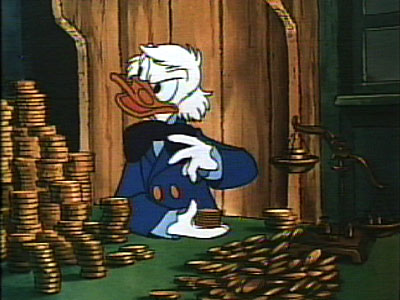Sorry the below is a repost but it might be helpful in understanding how the decision to go with MyMagic+ (MM+) got made.
Disney CEO Bob Iger joined Disney in 1996 when Disney took over ABC. Like many CEOs, Iger has near dictatorial powers when it comes to making strategic decisions.
To understand why MM+ happened, you need to know what happened during Iger's tenure before the initiative now known as MM+ was launched. Iger had absolutely no theme park experience and his opinion of the business has been formed by what has happened since joining Disney.
In 1998, Disney opened the very expensive DAK. Expectations were high yet financial results did not match those expectations. DCA opened in 2001 and had similar disappointing results.
At that point, adding theme parks to existing facilities very much fell out of vogue. However, there still was a strong view under Eisner (Disney's CEO until 2005) that "something" needed to be done to keep guests coming so Disney spent several hundred million to build attractions (e.g. Mission Space, Soarin', Expedition Everest, Toy Story Mania, etc.). With the exception of Expedition Everest, none had any appreciable affect on attendance and even EE didn't help revenue; guests simply spent more time in DAK and less time at WDW's other parks. (WDW has a similar problem today with the New Fantasyland.)
By the time Iger took charge in 2005, new theme parks and new attractions represented old-school thinking. Iger, a Blue Ocean Strategy believer, wanted an innovative business solution.
What was a rousing financial success was Disney's Magical Express (DME). Launched in 2005, corporate Disney discovered that offering "free" bus service boosted revenue on a self-sustaining budget (it's built into the price of the resorts). These captive guests spent more at WDW. Maybe, just maybe, the conventional wisdom went, the key to success was not traditional brick-and-motor investments but innovative business gimmicks.
Data at the time suggested Orlando tourism would be relatively flat for the foreseeable future. Thus, to grow business, Disney was going to have to figure out a way to get their deep-pocketed onsite guests to remain within the WDW bubble. Those were the ones spending the big dollars per day. Those were the high rollers corporate Disney wanted to chase.
New theme parks didn't boost WDW tourism, at least not enough to justify the cost. New attractions didn't have much effect financially. Yet something as simple as DME worked tremendously well. (By the way, so did targeting South American markets. It's these markets that have been slowly replacing declining domestic attendance.) With total Orlando tourism projected to be flat and with WDW having lots of deep-pocketed onsite guests spending their vacation money elsewhere, what could be done to boost revenue? Sure, prices could be raised (e.g. ticket prices up 25% in 3 years; food prices even more) but what else could be done? Higher prices only chased guests away. What else could Disney do to get their onsite guests to stay onsite?
Enter MM+.
MM+ represented the innovative thinking Iger so desperately wanted. MM+ was sold to corporate as a way to lengthen guest stays, reduce operating expense, and modernize WDWs antiquated systems. MM+ brought WDW into the 21st Century, something every Disney executive, who spends half their day with their heads buried in their smart phones, could appreciate.
DME got onsite guests to stay within the WDW bubble longer. The thinking was, so would MM+. After all, it was CFO Jay Rasulo who said to Wall Street, "So if we can get people to plan their vacation before they leave home, we know that we get more time with them. We get a bigger share of their wallet. So that's one thing for you guys to think about."
Remember, this was the same group that turned down Harry Potter at WDW. This is the group that has seen their NextGen budget more than double. To date, their theme park success has been based mostly on higher prices and good advertising in South America. Until the recent success of Carsland at DCA, this was the group that was essentially 0-fer at making smart theme park decisions. (Even Carsland was ramrodded through by Lasseter.)
At the time the decision was made to move forward with MM+, it seemed like a viable plan. Don't forget that it was conceived before the success of WWOHP and Carsland, before results suggested that the winning formula was to add well-themed and immersive lands, which is why, in the future, we'll get Avatar at DAK and Star Wars at DHS.
In hindsight, MM+ is beginning to look like a poor decision. Grossly overbudget, it's becoming Disney's albatross. Preliminary results suggest that large numbers dislike the preplanning and it will do little to discourage trips to other Orlando destinations. MM+ should result in some increased sales but not nearly enough to justify its investment and annual operating cost.
Financially, MM+ should not be a complete failure like John Carter but MM+ also won't be the golden goose it once was expected to be. WDW's numbers will be up in 2014. Not because of MM+ but from a slowly improving economy and the overflow of guests flocking to Orlando to see Diagon Alley.
A lot of Disney's most-senior executives have their names tied to MM+. They will continue to declare to anyone willing to listen that MM+ is a rousing success. However, internally, the view among some executives is MM+ is looking more and more like a dud.

